|
|
 
 The Twilight of the Goths: The Kingdom of Toledo, C. 560-711 The Twilight of the Goths: The Kingdom of Toledo, C. 560-711 
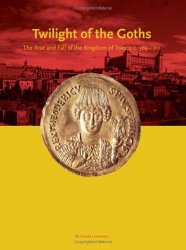 The Twilight of the Goths: The Kingdom of Toledo, C. 560-711 Harold Livermore 2006 Intellect L & D E F a E pdf 116 language: English ISBN:1841509663 2,11 mb Toledo, former capital of Spain until 1560, is now one of the most monumental of Spanish cities. In Roman times, it was originally a modest tribal township, which was eventually elevated to a national capital by the Visigoths (one of two main branches of the Goths, who along with their cousins, the Ostrogoths in South Russia, were considered barbarians across Europe). The history of the Visigoth's victory over Rome and the foundation of their own Western empire is an epic story: as dramatic as their subsequent overthrow in a single battle by the Islamic expansion in 710-711. Their rise owes much to their service as allies, and later legionaries, of the Roman army. Over time, they gradually shed their tribal attributes and became themselves 'Romanized'. The Goths' sudden collapse arose, similarly to the Romans, from their failure to resolve the problem of succession. Their legacy is unseen: they left no written history of themselves, and their story has to be pieced together from other accounts, however this book attempts to trace their evolutionary passage from a Germanic tribe into conquerors.
 
 Britain's Medieval Castles Britain's Medieval Castles 
 Author: Lise E. Hull Britain's Medieval Castles Praeger Publishers 2006 Format: PDF Size: 19,91 mb Language: English Pages: 248
 
 The Sword in the Age of Chivalry The Sword in the Age of Chivalry 
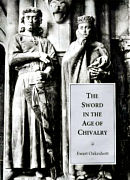 Author: Ewart Oakeshott 2002 Pages: 260 Format: PDF Size: 11,54 MB Language: English.
 
 Armies of the Middle Ages, volume 2 Armies of the Middle Ages, volume 2 
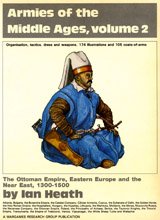 Author: Ian Heath Armies of the Middle Ages, volume 2 The Ottoman Empire, Eastern Europe and the Near East, 1300-1500 Wargames Research Group Publication Pages: 204 Language: English 1984 Format: PDF Size: 88,1 МБ
 
 Armies of Feudal Europe 1066 – 1300 Armies of Feudal Europe 1066 – 1300 
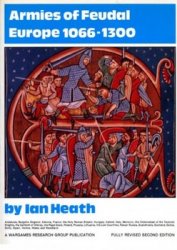 Armies of Feudal Europe 1066 – 1300 Author: Ian Heath Wargames Research Group ISBN: 0904417433 1989 Pages: 160 Language: English Format: PDF Size: 37 MB Armies of Feudal Europe 1066-1300 by Ian Heath. Full revised second edition published by Wargames Research Group 1989. 160 page paperback book covering the organisation, tactics, dress and weapons of approximately 25 nations with 147 line drawings and 149 coats of arms. This edition is now out of print and is rare.
 
 Mamluk 'Askari 1250-1517 Mamluk 'Askari 1250-1517 
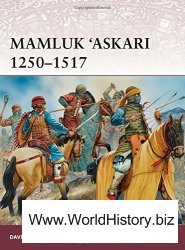 Author: David Nicolle Mamluk 'Askari 1250-1517 (Warrior) Osprey Publishing 2014 Format: PDF (scan), true pdf Size: 23.5 Mb, 3.8 Mb Language: English New archaeological material and research underpin this extensive, detailed and beautifully illustrated account of the famous Mamluk Askars.The Mamluk army is credited with finally defeating and expelling the Crusaders from the Middle East, with defeating and halting the Mongol invasion of the Islamic Middle East, and with facing down - though not defeating - Tamerlane. Their state was an essentially military one but was for centuries also the Protector of the Holy Places, which gave it supreme prestige within the later medieval Islamic world.The mamluk troops (askaris) of the Mamluk Sultanate in Egypt and Syria were probably the ultimate professional soldiers of the medieval period. They were supposedly recruited as adolescent slaves, though recent research has begun to undermine this oversimplified interpretation of what has been called the "mamluk phenomenon".The Mamluk Sultanate and its army lasted for a remarkably long time, from the mid-13th to early 16th century, long enough to resist the Portuguese in the Indian Ocean and Red Sea, before finally being defeated and overthrown by the Ottoman Sultanate. Indeed the mamluk phenomenon lasted even longer in Ottoman-ruled Egypt, until the final years of the 18th century. It was so embedded in Egyptian, and to a lesser extent Syrian, society and politics that the modern Egyptian army of the 19th century has, during its first decades, been described as a neo-mamluk force.
 
 Medieval Russia, 980-1584 Medieval Russia, 980-1584 
 Author: Janet Martin Medieval Russia, 980-1584 (Cambridge Medieval Textbooks) Cambridge University Press 2008 540 Format: Pdf Size: 5 MB Language: English This revised edition is a concise, yet comprehensive narrative of the history of Russia from the reign of Vladimir I the Saint, through to the reign of Ivan IV the Terrible. Supplementing the original edition with results of recently published scholarship as well as her own research, Janet Martin emphasizes the dynamics of Russia's political evolution from the loose federation of principalities known as Kievan Rus' through the era of Mongol domination to the development of the Muscovite state.
 
 Armies of the Middle Ages, volume 1 Armies of the Middle Ages, volume 1 
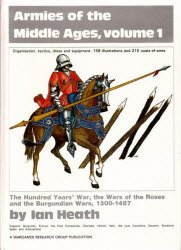 Author: Ian Heath Armies of the Middle Ages, volume 1 Wargames Research Group 1982 Format: pdf Language: English Size: 57 mb
 
 The Conquest of Saxony AD 782–785 The Conquest of Saxony AD 782–785 
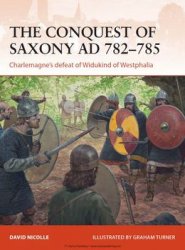 Author: David Nicolle The Conquest of Saxony AD 782–785: Charlemagne's Defeat of Widukind of Westphalia Osprey Publishing Osprey Campaign 271 ISBN: 178200825X 2014 Format: PDF (e-book) Pages: 98 Size: 9 Mb Language: English Charlemagne's conquest of the Saxons was the hardest fought and most protracted of his wars; it involved 18 campaigns spread across 33 years, a great deal of lower-level fighting and the harshest final peace settlement that Charlemagne ever imposed upon a defeated foe. Rapidly taking on the character of a religious conquest from its outset, it also became the most important of all Charlemagne's wars for the future direction and character of European history and began the long process of uniting the German-speaking peoples.
 
 Adversity's Wake: The Calamitous Fourth Voyage of Christopher Columbus Adversity's Wake: The Calamitous Fourth Voyage of Christopher Columbus 
 Author: Richard S. Philbrick (Author), Ms. Stephany M. Peñaloza (Translator), Ms. Deyreth García (Translator) Adversity's Wake: The Calamitous Fourth Voyage of Christopher Columbus CreateSpace Independent Publishing Platform 2012 Format: PDF Size: 51.6 Mb Language: English/Spanish Everyone knows of Columbus’s history-changing voyage of 1492. Few know he made three others to what became known as the “New World.” His fourth, and final, voyage was the stuff of fiction. The Admiral of the Ocean Sea battled hurricanes, constant storms and contrary currents. He fought pitched battles with the indigenous tribes in what is now Panama where he had to abandon two of his ships. Attempting to reach Santo Domingo in vessels barely afloat the adventurers were marooned on Jamaica. Two of the crew and a handful of Indians made a daring open-ocean journey in dugout canoes across the Windward Passage to bring word of their companion’s fate. Half of the marooned crew mutinied eventually leading to a bloody confrontation between shipmates. The author created a fictional narrator and a young orphan who made the journey in order to tell the story of this epic sea adventure. Two young students at the Universidad Latina in David, Panama, Stephany Peñaloza and Deyreth García, chose to translate this book while working towards their degrees in English language studies. This book is intended for Spanish-speaking students studying English. The English text is presented in BOLD text followed immediately by the Spanish translation in ITALICS. This unique formatting allows the reader’s eye to easily follow the story in English and then, if needed, check their comprehension by reading the Spanish translation.
 
 History of the Ottoman Empire and Modern Turkey: Volume 1, Empire of the Gazis: The Rise and Decline of the Ottoman Empire 1280-1808 History of the Ottoman Empire and Modern Turkey: Volume 1, Empire of the Gazis: The Rise and Decline of the Ottoman Empire 1280-1808 
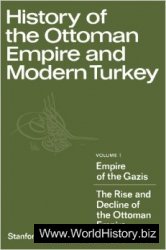 Author: Stanford J. Shaw History of the Ottoman Empire and Modern Turkey Volume 1, Empire of the Gazis The Rise and Decline of the Ottoman Empire 1280-1808 Cambridge University Press ISBN: 0521291631 1976 Format: PDF Size: 16,6 МБ Language: English Pages: 368 Empire of the Gazis: The Rise and Decline of the Ottoman Empire, 1280-1808 is the first book of the two-volume History of the Ottoman Empire and Modern Turkey. It describes how the Ottoman Turks, a small band of nomadic soldiers, managed to expand their dominions from a small principality in northwestern Anatolia on the borders of the Byzantine Empire into one of the great empires of fifteenth- and sixteenth-century Europe and Asia, extending from northern Hungary to southern Arabia and from the Crimea across North Africa almost to the Atlantic Ocean. The volume sweeps away the accumulated prejudices of centuries and describes the empire of the sultans as a living, changing society, dominated by the small multinational Ottoman ruling class led by the sultan, but with a scope of government so narrow that the subjects, Muslim and non-Muslim alike, were left to carry on their own lives, religions, and traditions with little outside interference.
 
 Warfare in the Medieval World Warfare in the Medieval World 
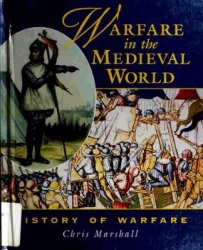 Author: Chris Marshall Warfare in the Medieval World (History of Warfare) Raintree Steck-Vaughn Company 1999 Format: PDF Pages: 88 Language: English Size: 11.7 MB Provides an overview of the evolution of military conflicts from the fifth through the fifteenth centuries, describing changes in the make-up of the armies, fighting tactics, and weapons.
 
 Atlas of Medieval Jewish History Atlas of Medieval Jewish History 
 Author:Haim Beinart Atlas of Medieval Jewish History Coronet Books Inc. 1992 Format:PDF Size:50.01 MB Language:English Atlases dealing with the history of the Jews have begun appearing in English only recently. It is therefore a great contribution to the field to have this translation of a volume first published in Israel, where scholars have long realized the importance of such works for both students and researchers. The meticulous research of Beinart (Hebrew Univ., Jerusalem), one of the foremost scholars of medieval Jewish history, is evident on every page. He has divided the book into three major sections: an initial portion extending from the barbarian invasion of Europe to the Crusades; a second devoted to the period ending with the expulsion from Spain; and a final segment covering developments through the Chmielnicki massacres and Sabbatean movement. Every student of the period will treasure the 116 maps and illustrations, demographic data, and artwork. The volume also contains a useful bibliography and map, subject, and people indexes. This much-needed research and educational tool makes an excellent companion to Evyatar Friesel's Atlas of Modern Jewish History ( LJ 1/1/91); it covers in depth material touched on in Martin Gilbert's The Illustrated Atlas of Jewish Civilization (one of LJ 's "Best Reference Books," 4/15/91). Highly recommended to libraries and the general audience.
 
 The Viking Blitzkrieg AD 789-1098 The Viking Blitzkrieg AD 789-1098 
 Author: Martyn Whittock, Hannah Whittock The Viking Blitzkrieg AD 789-1098 The History Press 2013 ISBN: 0752467999 Format: PDF Size: 5,3 МБ Language: English Pages: 447 This book explores the impact of the Viking Wars on England between the first recorded attack in AD 789 and the last major Scandinavian interventions in the late eleventh century, with a few stray events occurring even later than this. This book argues that without the Viking Wars there would have been no united England in the 10th century, no rise of the Godwin family and their conflict with Edward the Confessor, no Norman connection, no Norman Conquest and no Domesday Book. The wars and responses to them accelerated economic growth; stimulated state formation and an assertive sense of an English national identity; created a hybrid Anglo-Scandinavian culture that spread beyond the so-called Danelaw; and caused an upheaval in the ruling elite.
 
 Armor Armor 
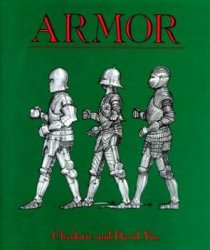 Author: Charlotte and David Yue Armor Houghton Mifflin Company 1994 Format: PDF Pages: 104 Language: English Size: 10.6 MB No figure in history is more vivid and dramatic than the medieval knight. Fierce in battle and gallant in their defense of the weak, these warriors of the Middle Ages are seen as champions of justice in a savage world. They did not always live up to our image of them, but they still represent a noble ideal.
 
 A Military History of the Ottomans, From Osman to Ataturk A Military History of the Ottomans, From Osman to Ataturk 
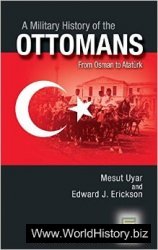 Author: Mesut Uyar, Edward J Erickson A Military History of the Ottomans, From Osman to Ataturk Praeger ISBN: 0275988767 2009 Format: PDF Size: 3,4 МБ Language: English Pages: 379 The Ottoman Army had a significant effect on the history of the modern world and particularly on that of the Middle East and Europe. This study, written by a Turkish and an American scholar, is a revision and corrective to western accounts because it is based on Turkish interpretations, rather than European interpretations, of events. As the world's dominant military machine from 1300 to the mid-1700's, the Ottoman Army led the way in military institutions, organizational structures, technology, and tactics. In decline thereafter, it nevertheless remained a considerable force to be counted in the balance of power through 1918. From its nomadic origins, it underwent revolutions in military affairs as well as several transformations which enabled it to compete on favorable terms with the best of armies of the day. This study tracks the growth of the Ottoman Army as a professional institution from the perspective of the Ottomans themselves, by using previously untapped Ottoman source materials. Additionally, the impact of important commanders and the role of politics, as these affected the army, are examined. The study concludes with the Ottoman legacy and its effect on the Republic and modern Turkish Army.
 
 Atlas of medieval Europe Atlas of medieval Europe 
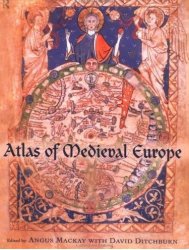 Atlas of medieval Europe Rоutledge Author: Angus MacKay, David Ditchburn 1996 Pages: 288 Format: PDF Size: 14 mb Language: English Covering the period from the fall of the Roman Empire through to the beginnings of the Renaissance, this indispensable volume brings the complex and colorful history of the Middle Ages to life. It investigates the major political, social and cultural changes, showing their spread throughout the middle ages, and takes into account recent developments in scholarship. It also includes geographical coverage, extending the broadest definition of Europe from the Atlantic coast to the Russian steppes; maps addressing a separate issue or series of events in Medieval history, with a commentary locating it in its broader context; and maps providing a vivid representation of the development of nations, peoples and social structures. With over 140 maps, expert commentaries and an extensive bibliography, this is the essential reference for students at all levels, libraries and all those who want a thorough, geographically based guide to medieval Europe.
 
 Empires of Medieval West Africa: Ghana, Mali, and Songhay Empires of Medieval West Africa: Ghana, Mali, and Songhay 
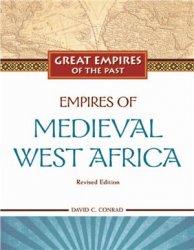 Author: David C. Conrad Empires of Medieval West Africa: Ghana, Mali, and Songhay (Great Empires of the Past) Chelsea House Publications 2009 Language: English Pages: 152 Format: PDF Size: 15,53 МБ Beginning about 1200 CE, the Mali, Songhay, and Ghana empires spread their sequential influence across the western horn of Africa, making advances in trade, language, culture, and economy. Influenced heavily by Islam in their later periods, these empires flourished and grew under a series of powerful leaders, including one, Mansa Musa, whose skills were celebrated in European capitals. "Empires of Medieval West Africa, Revised Edition" discusses the vital role salt and other natural resources played in the development of the empires, the rich and diverse cultures, and the influence of the growing Islamic Empire on every day life. Included are some transcriptions of the oral tradition that is, in many cases, the only record of the deeds and achievements of these people. Connections to life today include the continuing impact of Islam and tribal groups in today's Africa and the influence of the medieval traditions on modern music and cuisine.
 
 The Birth of the Hospital in the Byzantine Empire The Birth of the Hospital in the Byzantine Empire 
 Author: Timothy S. Miller The Birth of the Hospital in the Byzantine Empire Johns Hopkins University Press ISBN: 0801856574 1997 Format: PDF Size: 36,8 МБ Language: English Pages: 328 Medical historians have traditionally claimed that modern hospitals emerged during the latter half of the nineteenth century. Premodern hospitals, according to many scholars, existed mainly as refuges for the desperately poor and sick, providing patients with little or no medical care. Challenging this view in a compelling survey of hospitals in the East Roman Empire, Timothy Miller traces the birth and development of Byzantine xenones, or hospitals, from their emergence in the fourth century to their decline in the fifteenth century, just prior to the Turkish conquest of Constantinople. These sophisticated medical facilities, he concludes, are the true ancestors of modern hospitals. In a new introduction to this paperback edition, Miller describes the growing scholarship on this subject in recent years.
|
|

























 World History
World History




![Black Thursday [Illustrated Edition]](https://www.worldhistory.biz/uploads/posts/2015-05/1432470149_1431513568_003514b1_medium.jpeg)




